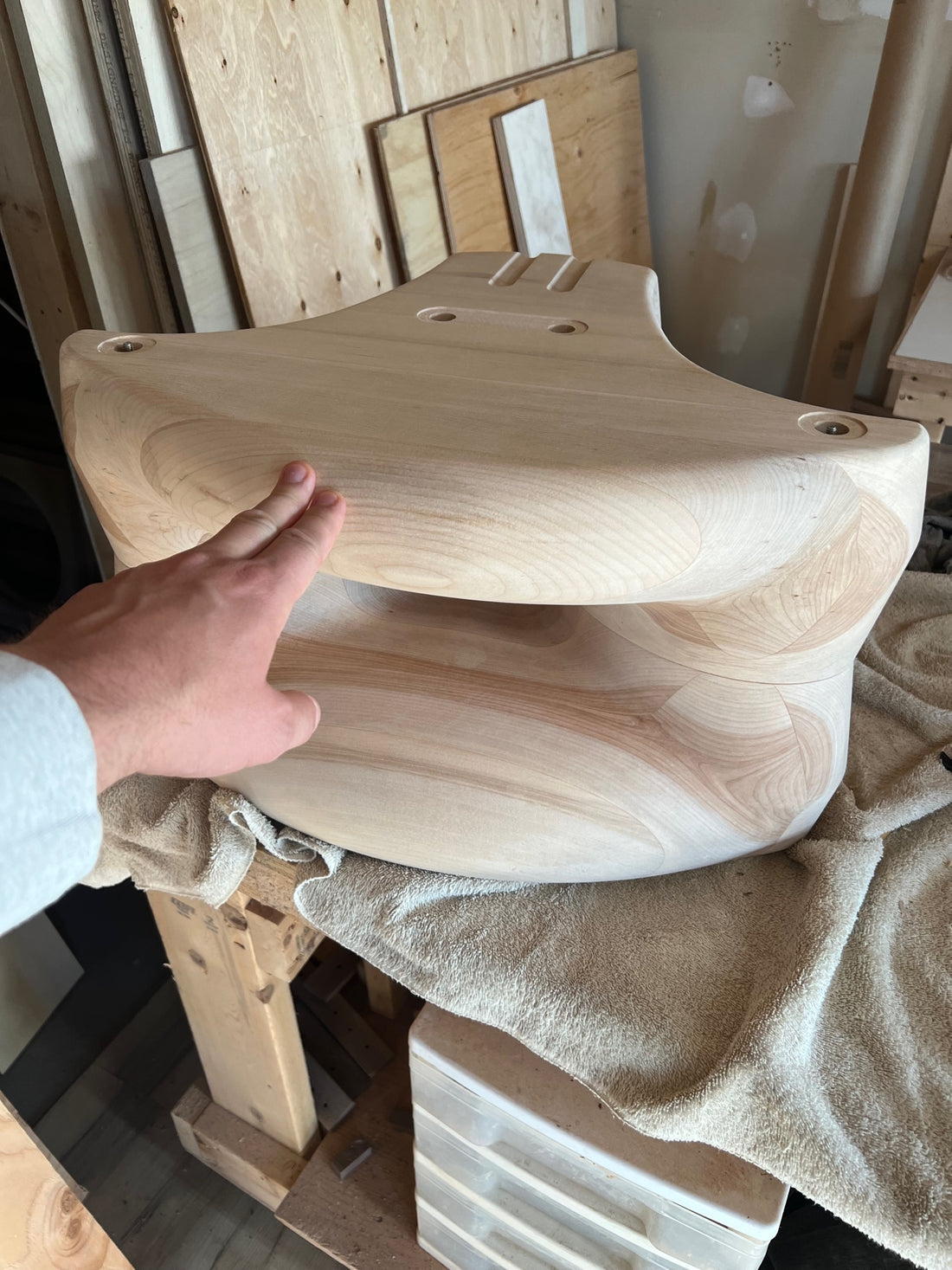
In this blog post I test the new ES-450 Biradial No.2143.
Horn Features
- 450Hz cutoff frequency (Fc)
- 2" throat diameter
- 30cm high x 55cm wide (12" x 22")
- ES horn flare curvature with full wrap-around
- Rear extension for positioning of super tweeter
- Rubber ball pocket feet (rear ball can be oversized to provide downward tilt)
- Threaded rod secures upper and lower half (hidden by brushed nickel covers)
- Decal on top of horn with company logo
- Optimized physical size for 15" 2-way applications







Measurements
We start with the RCF ND950. I'm using the Eminence HA14-2 throat adapter. I've overlaid the impedance sweep as well (red).

Next I tried the SB Acoustics 65CDN-T .

Finally I tried the B&C DCM50 16ohm. Unfortunately there is no product page for the 16ohm version on the B&C website. The driver is a 2" throat and so I did not need the HA14-2 adapter.

Next I measured the off-axis for the ND950 at 0,15,30 & 45 degrees off-axis.

I then measured at 5 degree increments to produce a polar map. I'm using 12db/octave smoothing and a 5ms gate time. Mic distance is 1.5m.

Next I measured the CSD plot for the ND950.

I then measured the CSD for the SB Audience 65CDN-T.

I then measured the CSD plot for the B&C DCM50 16ohm.

I then measured the burst decay for the RCF ND950.

I then measured the burst decay for the SB Acoustics 65CDN-T.

I then measured the burst decay for the B&C DCM50 16ohm.

I then measured the harmonic distortion at 85db for the RCF ND950.

Measuring the same for the 65CDN-T is shown below.

Measuring the same for the B&C DCM50 16ohm is shown below.

I then measured the intermodulation distortion for the RCF ND950. The test signal level was 85dB at 1m.

I then measured the IMD for the SB Audience 65CDN-T.

I then measured the IMD for the B&C DCM50 16ohm.

I then measured the Gedlee distortion for the RCF ND950 for both 85dB (Red) and 95dB (Blue).

The same is shown for the SB Audience 65CDN-T below with 95dB in red.

Below is the Gm for the B&C DCM50 16ohm with 95dB shown in red.
Listening Evaluation
I briefly listened to each driver model. I'm familiar with the signature sound character of the SB Audience and the RCF, however the B&C DCM50 16ohm is a new arrival. So I decided to spend a bit more time listening to this driver. The driver sounded very mid-present which was masking some of treble detail. So I experimented with various capacitor values to act as a first order high pass to the B&C. This can often flatten the response if there is a midrange hump in the frequency response. Below is the result of a 6.8uF capacitor in the signal path.

Listening further I was surprised to hear a very balanced sound. The treble took on a palpable thickness that I found very musical. Stringed instruments had wonderful body and tone. I also did not find treble extension lacking, even though this is technically a midrange "only" driver, this particular model does well in reproducing treble frequencies up to 10kHz. I think I favored the coherent sound across the midrange and treble to the point that the treble that did exist was so well integrated that I did not miss that last bit of upper treble extension. It used to be that I could hear up to 14kHz however now I think I'm down to 13kHz if I'm honest. Supporting my preference for the the treble quality of the DCM50 are some very specific areas of measurement. For example we see H3 and H4 at extremely low levels at 10kHz as shown below. (H3 0.00216% & H4 0.00265%)

Included in this is benign H2 adding richness to the sound character, although still at extremely low levels of only 0.133%.
With the 6.8uF capacitor in place we see a drastic reduction in modulating distortions in the upper treble as well. Below is the same IMD test we saw earlier but with the first order high pass in place.

IMD is extremely low at -68dB dynamic range for the upper treble region. (85dB test signal level).

Further to this, the CSD plot shows a very clean upper treble unlike the other two models in the test.

Considering that I've already done a blog post on the other drivers here and here, I wanted to offer my listening impressions on the DCM50 16ohm.
B&C DCM50 Subjective Listening Impressions
My listening evaluation was done with the 1798 bass cabinet, ES290 Biradial (No.1670). The high pass filter on the mid-frequency was the simple first order used earlier in this blog post which is just a single 6.8uF capacitor. I let the midrange operate into the treble without any low pass filter. The Fostex T900A came in at 11kHz which was time aligned in the Z-depth with the DCM50.

Below is my subjective ranking on the DCM50 16ohm.
Soundstage depth: --- 10/10
Smoothness: --- 10/10
Vocal clarity: --- 10/10
Accurate musical instrument timbre: --- 10/10
Sense of dynamic range: --- 9/10
Conclusion
The ES-450 Biradial provides a very linear frequency response as we can see from the results with the 65CDN-T.

Off-axis is extremely well behave and offers wide coverage even in the upper treble region. As you can see by the green arrow below, the coverage window for the 10kHz region is 66 degrees.

The ES450 fills the size gap between the ES290 and ES600 biradial. It has been optimized for use with a standard 15" bass cabinet such as this one. There are a variety of drivers that can work with the ES450, especially when the Eminence HA14-2 is used to accommodate 1.4" drivers. The adapter keeps a smooth throat angle as well, so sound quality is not compromised when using the adapter.
